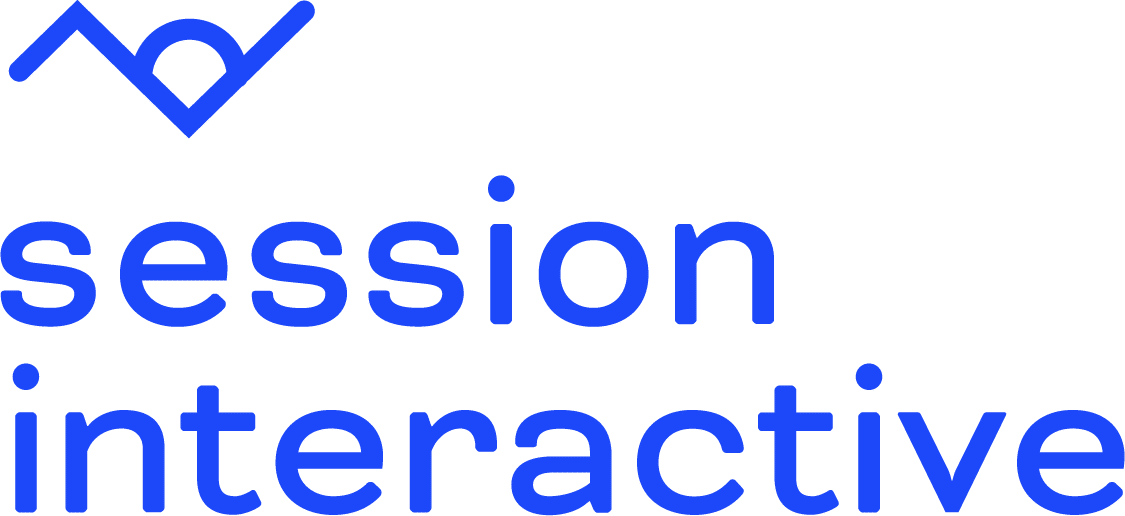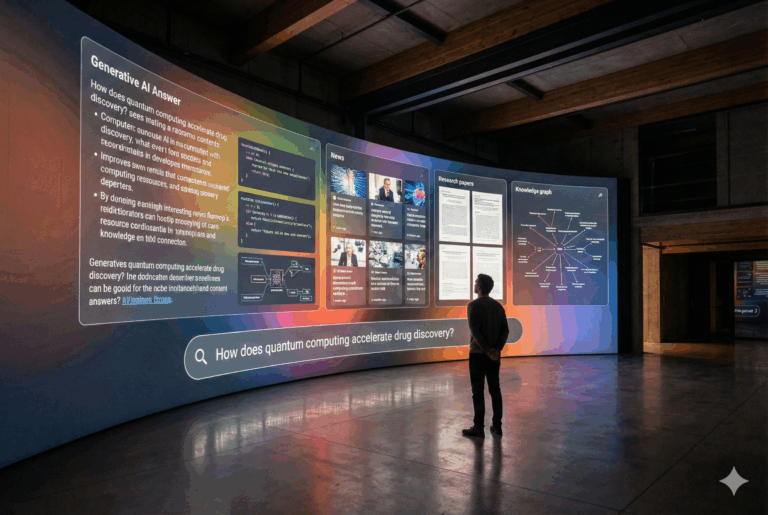Creating great content demands alignment with your marketing goals, precision in targeting your audience’s needs, valuable insights, and a structure that ensures clarity.
Great content has the power to educate, inform, and resolve pain points, all while driving measurable results for your business. But how do creators create truly great content? It starts with a well-crafted content brief.
A content brief acts as a roadmap, guiding writers, designers, and strategists toward creating content that is strategic, impactful, and easy to discover. It outlines clear objectives, defines your target audience, and bridges the gap between creativity and performance. Whether you are looking to engage your audience and provide value, establish thought leadership, or boost your SEO, a carefully developed content brief ensures consistency and focus.
By providing detailed direction and aligning marketing strategy with execution, content briefs also streamline workflows and prevent costly missteps. They help teams deliver content that resonates, ranks, and drives meaningful action.
What Is a Content Brief?
A content brief is a detailed document that provides essential information and direction to guide the creation of a piece of content. It outlines the purpose, audience, key topics, format, and goals, so that everyone involved in the process is aligned and working toward the same objectives. An SEO content brief takes this a step further by integrating editorial guidance with search optimization strategies. This means incorporating elements like target keywords, search intent, metadata, and competitor insights, which help the content not only resonate with readers but also rank effectively on search engines.
Marketers, writers, and content teams rely on content briefs to simplify workflows, foster collaboration, and maintain consistency across campaigns. With a well-crafted brief, teams have a clear roadmap to create content that addresses audience pain points, answers key questions, and ultimately drives performance. By bridging creative vision with strategic focus, content briefs save time, reduce revisions, and ensure the final output is impactful and discoverable.
Elements of a Content Brief
Let’s explore a content brief in detail. From defining the topic and target audience to integrating subtopics and competitive strategies, these components lay the groundwork for effective content creation. Below, we break down the key elements that make a content brief truly impactful.
The Client
Focusing on the client is the foundation of any successful content brief. Understanding their business, industry, and unique value proposition allows you to plan content that aligns with their brand identity and speaks directly to their target audience. Gathering details like the client’s goals, challenges, and differentiators helps tailor content to business objectives. This client-centric approach not only builds trust but also ensures that the content delivers measurable impact, whether it’s driving engagement, generating leads, or boosting brand awareness.
The ICP
Focusing on the client’s Ideal Customer Profile (ICP) within a content brief helps content resonate with the right audience. The ICP outlines key traits such as demographics, goals, challenges, and behaviors of the target audience, providing a clear framework for tailoring the messaging and tone. Aligning content with the specific preferences and needs of the ICP helps writers create more personalized and engaging experiences. Including a well-defined ICP streamlines the creation process and makes sure it delivers on the client’s goals.
The Topic
Focusing on a clear topic keeps the content on track. Including comprehensive topical information enables writers to explore additional subtopics, ensuring topical depth, relevance, and completeness. This approach strengthens the authority of the content and provides readers with a complete and satisfying resource.
Content Type
Determining the proper content type helps determine the form and content of the piece. Whether it’s a blog post, product page, video, infographic, or social media post, each format serves a distinct purpose and caters to specific audience preferences. By selecting the right form, you can align the content with the strengths of that form. Making a thoughtful choice ensures the content is aligned to the channel and uses the channel correctly.
Style Guidelines
Including style guidelines in a content brief makes sure content reflects the client’s brand identity. These guidelines encompass elements like voice, tone, and formatting preferences, which help writers communicate effectively while aligning with the audience’s expectations. Consider the needs of the piece. Is the client’s brand voice formal and authoritative or casual and conversational? Clear direction in this area ensures coherence across all content. Thoughtful style guidelines save time during content creation and strengthen the piece’s brand presence by delivering a unified and professional message.
Search Intent
Search intent in a content brief helps content align with the reader’s search goals. Search intent categories, such as informational, commercial, transactional, navigational, local, educational, branded, and comparative intents, help guide the structure and purpose of the content. By identifying the primary intent behind a search query, the brief guides the content to deliver on the specific intention of the searcher.
Funnel Stage
Identifying the proper funnel stage within a content brief is crucial for aligning the content’s purpose with the audience’s position in their buyer’s journey. Each funnel stage—from awareness to consideration to decision or even post-purchase—is tied to specific audience needs and intent. By pinpointing the target stage, writers can craft content that delivers the right message at the right time, nurturing leads effectively and guiding them toward the next step.
Keyword Strategy
A strong keyword strategy is a foundational element of any content brief. It helps you optimize for audience relevance and search engine visibility. Including primary, secondary, and related keywords helps writers align the content with specific search queries while broadening its reach through diverse but relevant terms.
Metrics like search volume and keyword difficulty helps you make informed decisions about which keywords will offer the most impact. A comprehensive approach positions the content to effectively compete in search rankings.
Metadata
Having a properly structured URL, title tag, and meta description is essential for optimizing content visibility.
A clear, concise URL improves readability and helps search engines and users quickly understand the page’s purpose. The title tag, often the first element users see on search engine results pages, plays a critical role by offering a compelling and accurate summary of the content. The meta description further supports this goal by providing a brief but persuasive overview, encouraging users to visit the page.
Thoughtfully designed metadata boosts click-through rates and improves the content’s overall performance and discoverability.
Competitors
Analyzing top-ranking direct and indirect competitors makes for a well-rounded content brief, and allows you to identify gaps and opportunities to differentiate your content. Evaluating competitor content types helps tailor your approach to audience preferences. Plus, studying popular SERP features, like AI Overviews, Featured Snippets or “People Also Ask” sections, reveals ways to improve visibility and create content that meets search intent effectively. Including these insights empowers teams to develop content that is both impactful and unique.
Competitor Strategies
Analyzing competitor strategies is a pivotal element in shaping the strategic positioning of a content brief. Examining how competitors engage their audience helps you find valuable insights into market trends and effective tactics. Analysis helps identify opportunities to differentiate your approach, whether through tone, format, or addressing unmet needs.
Incorporating these findings into your content brief allows for a targeted, proactive strategy that is informed by real-world successes and challenges. Ultimately, this helps your content match industry standards and outperform competitors while delivering authentic value to the audience.
Internal Linking
Recommending internal links in a content brief helps improve website navigation, user experience, and SEO. By linking to and from relevant content, such as blogs, product pages, or service offerings, you create clear pathways that encourage users to explore more of the site. An interconnected structure helps to distribute page authority, boosting the visibility of important pages in search engine rankings. Additionally, internal links keep visitors engaged longer by guiding them toward valuable resources on your site, enhancing their overall experience and visit length.
AI Overviews
Including AI Overview examples in a content brief can inform your overall view of topic and subtopic relationships. Analyzing top-ranking competitor content that frequently surfaces in AI-generated results gives you insight into the strategies that resonate with audiences. These examples help identify trends, such as the use of concise explanations or data-driven content, that can inform your content. Incorporating this analysis ensures your content is optimized to align with AI-driven algorithms and user expectations.
Content Outline
A well-structured content outline is a vital component of a content brief to provide a roadmap for writers and strategists to follow. It ensures a cohesive and organized flow by detailing recommendations for the title, proper headings, and a logical heading hierarchy, which are crucial for readability and SEO.
Suggested section lengths help balance depth with engagement, preventing unnecessary fluff or overly dense information. Clear, detailed prompts within the outline guide writers on tone, format, and specific points to cover. By offering this level of structure, a content outline makes it easier to produce high-quality, goal-oriented content efficiently.
Image/Video Recommendations
High-quality, custom images and videos enhance user engagement and convey professionalism within your content. They create visual interest, help break up large blocks of text, and provide an immersive experience that keeps readers focused. Custom visuals also allow you to align imagery with your brand identity and message, setting your content apart from competitors. Equally important is the inclusion of relevant image alt text, which ensures accessibility for users with visual impairments and improves SEO by providing context for search engines. Thoughtfully recommended imagery and multimedia elements enhance the user experience and support your content’s performance.
Structured Data
Structured data maximizes the visibility and functionality of your content in search engines. Standardized schema markup provides search engines with clear context about your content, helping it cite you for features such as rich snippets, FAQs, and enhanced navigation to appear in search results. This added layer of detail improves how information is displayed and increases clicks from SERP features. Including structured data suggestions in a content brief ensures writers and developers align on the necessary specifications.
Using Content Briefs: Tips for Writers
A content brief is your foundation for creating impactful, high-performing content. To make the most of it, follow these best practices. They’ll ensure your work aligns with the brief’s intent, resonates with the target audience, and meets the overall content goals.
Read the Entire Brief Upfront
Begin by thoroughly reviewing the brief before you start writing. Understand the topic, target audience, search intent, primary keywords, structure, and any specific guidelines. Starting with a full picture helps you write effectively and avoid revisions later.
Clarify Ambiguities Early
If any part of the brief feels unclear or inconsistent, address those questions immediately. Reach out to your team or point of contact to get clarification. Eliminating confusion at the start prevents wasted effort and ensures alignment.
Adapt to the Audience and Funnel Stage
Tailor your content to the defined audience and where they are in the sales or engagement funnel. For example, top-of-funnel content might require a lighter, educational tone, while bottom-of-funnel content could emphasize clear, actionable steps.
Use Keywords Naturally
Incorporate the provided keywords seamlessly into your content. Avoid overstuffing or forcing them into sentences. Prioritize readability and ensure keywords support rather than disrupt the flow.
Follow the Recommended Structure
Stick to the suggested headings and prompts, as they are crafted to ensure cohesion. If additional subheadings improve clarity or narrative flow, add them thoughtfully. The goal is structured, easy-to-navigate content.
Link Internally with Purpose
Use the provided internal links and anchor text strategically. Ensure that links feel natural, are contextually relevant, and add value by pointing to deeper resources or related ideas.
Align with Metadata Instructions
Pay close attention to the title tag, meta description, and any other metadata guidelines in the brief. Ensure your introduction and overall direction reflect them closely to meet SEO expectations.
Study the Competition
If competitor examples are supplied, use them as a benchmark. Aim to match or exceed their level of depth, presentation, and value. Look for opportunities to differentiate your content while maintaining high quality.
Match the Brand Voice
Stick to the tone and voice outlined in the brief. This might mean being conversational, authoritative, or reassuring, depending on the brand’s style. Keeping the tone consistent supports the brand’s credibility and connection with the audience.
Deliver Polished Work
Submit drafts that are clean, organized, and easy to read. Use clear formatting, proper headings, bullet points, and visuals like images or charts to enhance engagement and readability.
Better Content Starts with a Better Brief
Crafting a clear, detailed content brief is essential for creating effective, goal-aligned content. From structuring outlines to integrating keywords naturally, providing engaging visuals, leveraging structured data, and adhering to brand voice, each element of a content brief plays a critical role in driving success. A well-thought-out brief not only streamlines the writing process but also ensures consistency, collaboration, and measurable results. Now’s the time to put these strategies into action. Start improving your content briefs today, and watch how impactful, high-performing content becomes the norm for your team.
Take your content strategy to the next level with Session Interactive. We have 15+ years of experience helping organizations in specialized industries like B2B, financial, and healthcare turn content into measurable business results.
Writing content briefs that elevate our clients’ work is our specialty, and we’ve proven it time and again. Just look at how we helped Insect Lore and Oxbow Animal Health achieve remarkable SEO results with tailored, strategic briefs.
By partnering with us, you’ll gain the clarity and expertise needed to produce content that truly performs. Explore our work and services today and see how we can bring measurable success to your content goals.
Ready to elevate your content marketing? Let’s talk about turning your content into a lead generation and acquisition engine that works as hard as you do.






